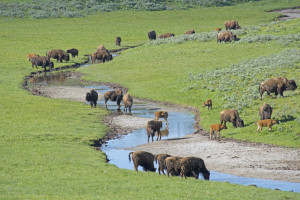 This month we continue our focus on another majestic state, Montana. The state is rich in natural resources and beautiful landscapes. The majority of this state has not been industrialized and remains close to nature. Montana is the 4th largest state (land size), yet it is one of the least populated states in the country. The state has a lot more to offer than just its beautiful scenery. When you finish reading this blog, you might think about living in Montana.
This month we continue our focus on another majestic state, Montana. The state is rich in natural resources and beautiful landscapes. The majority of this state has not been industrialized and remains close to nature. Montana is the 4th largest state (land size), yet it is one of the least populated states in the country. The state has a lot more to offer than just its beautiful scenery. When you finish reading this blog, you might think about living in Montana.
Business Climate
According to the 2014 census, its population of 1.024 million people is the 5th smallest in the nation and is less than Rhode Island’s (1.055 million). On the other hand, Montana is abundant in land and natural resources, befitting of its nickname, the “Treasure State.” The majority of its land is dedicated to farmland and agriculture. It is the 3rd largest producer of wheat in the US generating approximately 11% of the total wheat production in the country. In addition to crops and livestock, Montana also offers mining as one of its key industries. Gold, silver, copper and coal are just a few of what you will find in Montana. Over $2 billion in Montana’s GDP every year comes from mining. Click here for a map of some of the operating mines in Montana.
Although popularly known for its agriculture and mining, the state in thrives other industries as well, such as construction and health care. The state’s economy has been consistent despite the national economic downturn, largely due to its ability to provide jobs for its citizens. Montana’s unemployment rate sits at 4% below the national average. It is also important to note that the state’s high school education attainment ranks 2nd in the nation (92.6%). The treasure within the state is its natural resources including its population.
Tax Climate
According to the Tax Foundation’s 2016 State Business Tax Climate Index, Montana is favored by majority, ranking 6th out of 50 states. The State imposes a flat rate of 6.75% in corporate income tax, which is the 25th highest among states that levy this type of tax. Montana’s state and local corporate income tax collections per person were $132 in 2012 which ranked 23rd highest nationally.
Montana’s personal income tax is comprised of seven brackets starting at 1% and having a top rate of 6.9%. The State’s top rate ranks 14th highest among states that levy an individual income tax. Montana’s state and local income tax collections per person were $899 in 2012 which ranked 23rd lowest in the nation.
Great news is that Montana is among the five states that do not impose sales tax. It is a great place to go shop if you are trying to save some money!
Tax Credits & Incentives
Alternative Energy Production Credit: This program provides tax credits to a business which invests $5,000 or more in certain depreciable property under the Internal Revenue
Code for a commercial or net metering system located in Montana which generates energy by means of an alternative renewable energy source. The tax credit amounts to 35% of the eligible expenditures.
- The credit must first be claimed in the year in which the asset was placed in service; any excess credit may be carried over up to 7 years.
- For wind energy investments 5 megawatts or larger, which are located within the exterior boundaries of a Montana Indian reservation, the credit may be carried over up to 15 years
New/Expanded Industry Credit: This tax credit is applicable to manufacturing companies that increase their total full time employment by at least 30% in Montana. The credit amounts to 1% of the total wages paid to new employees and is limited to the year in which it is earned. The benefit is available during the first three years following initiation or expansion of the manufacturing operation.
Random Facts
- 46 out of Montana’s 56 counties are considered “frontier counties” with an average population of 6 or fewer people per square mile.
- There are more cattle in Montana than there are people.
- Montana is the only state in the US with a triple divide, which allows water to flow into the Pacific Ocean, Atlantic Ocean, and the Hudson Bay.
- Montana’s name comes from the Spanish word for mountain.














